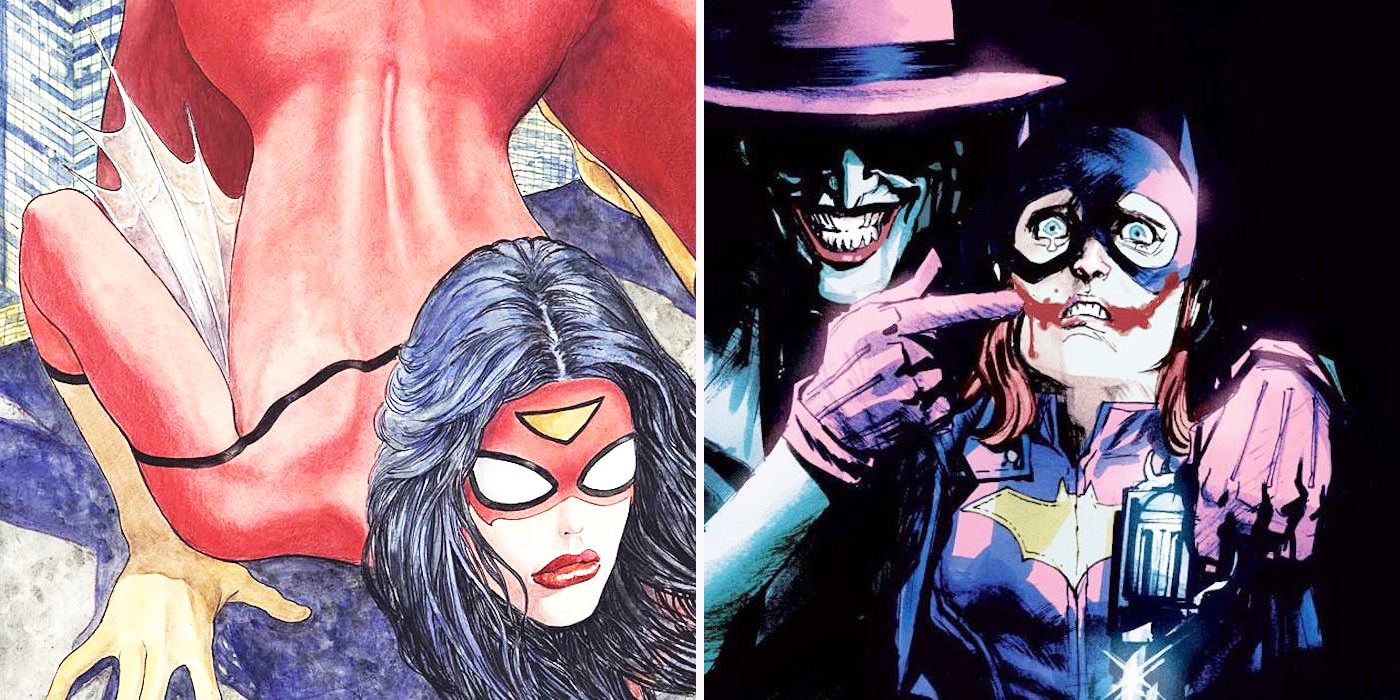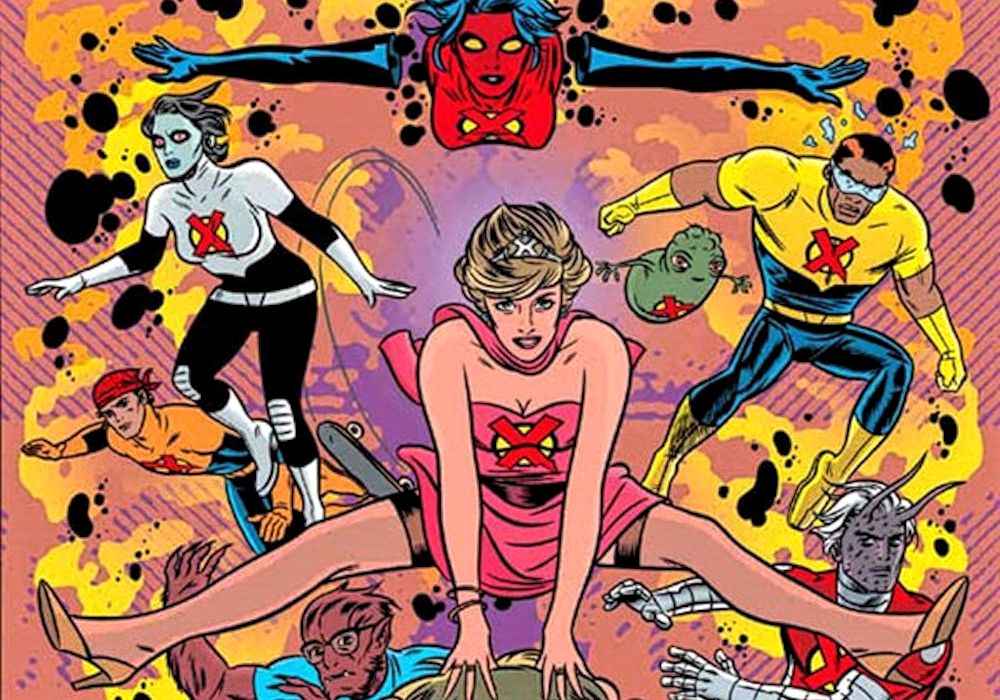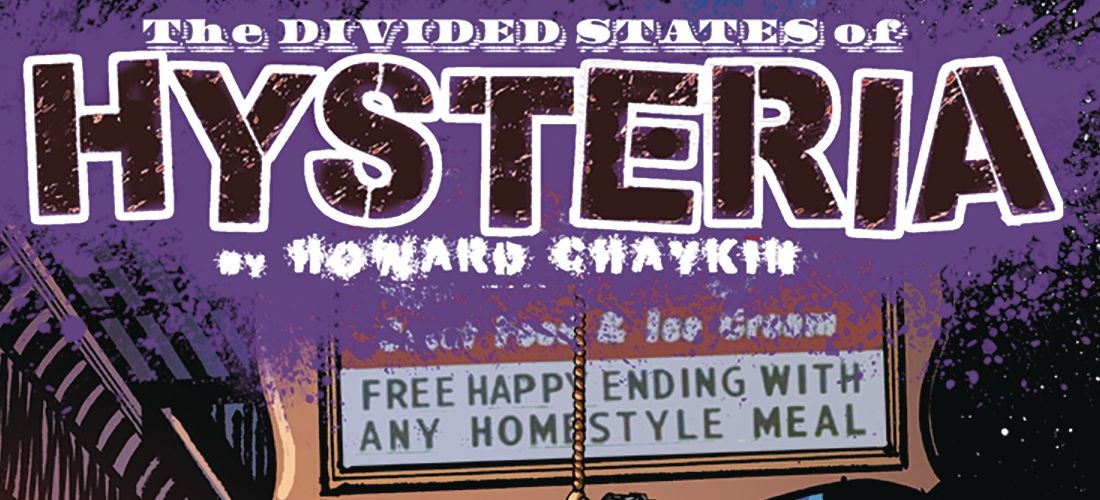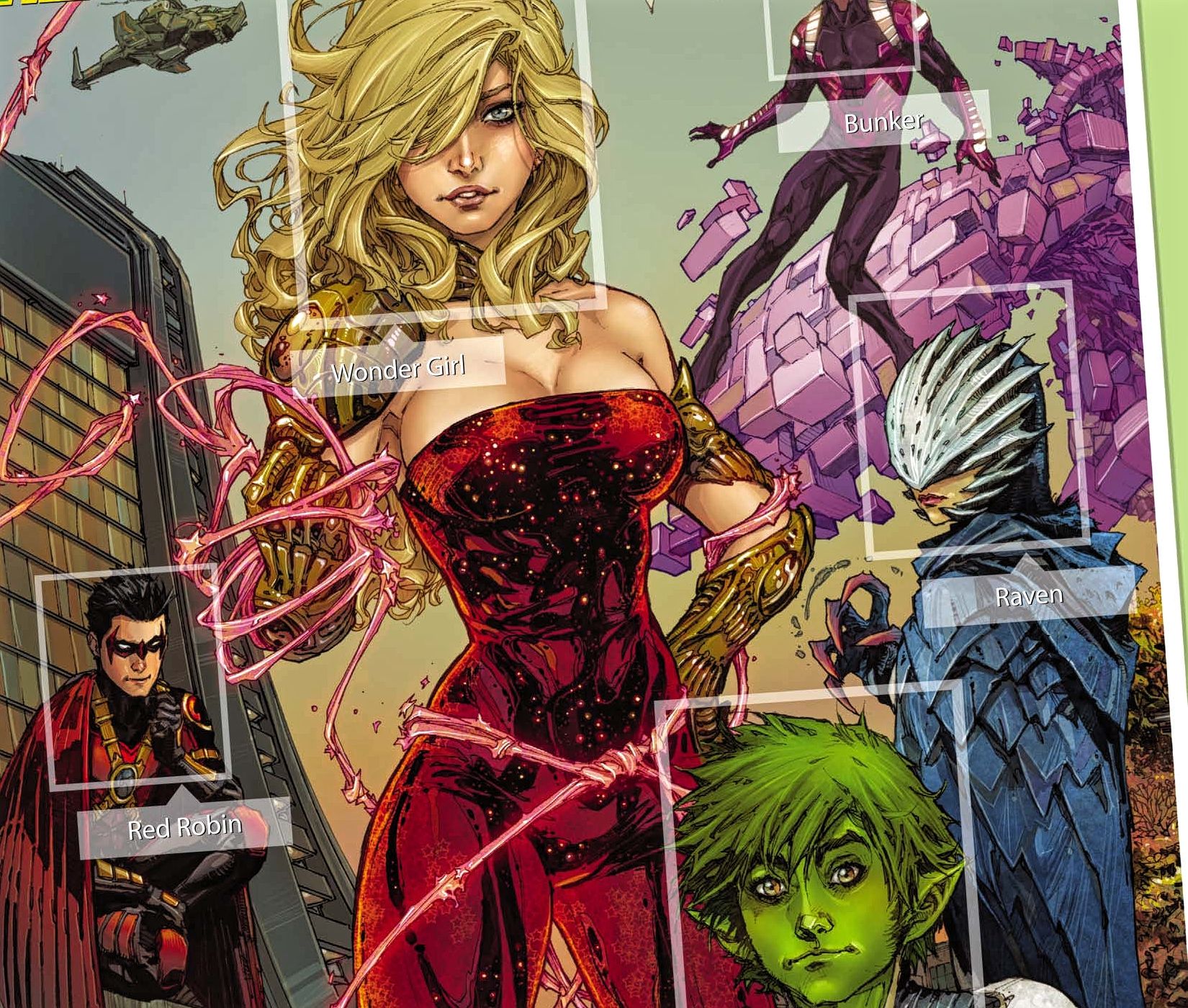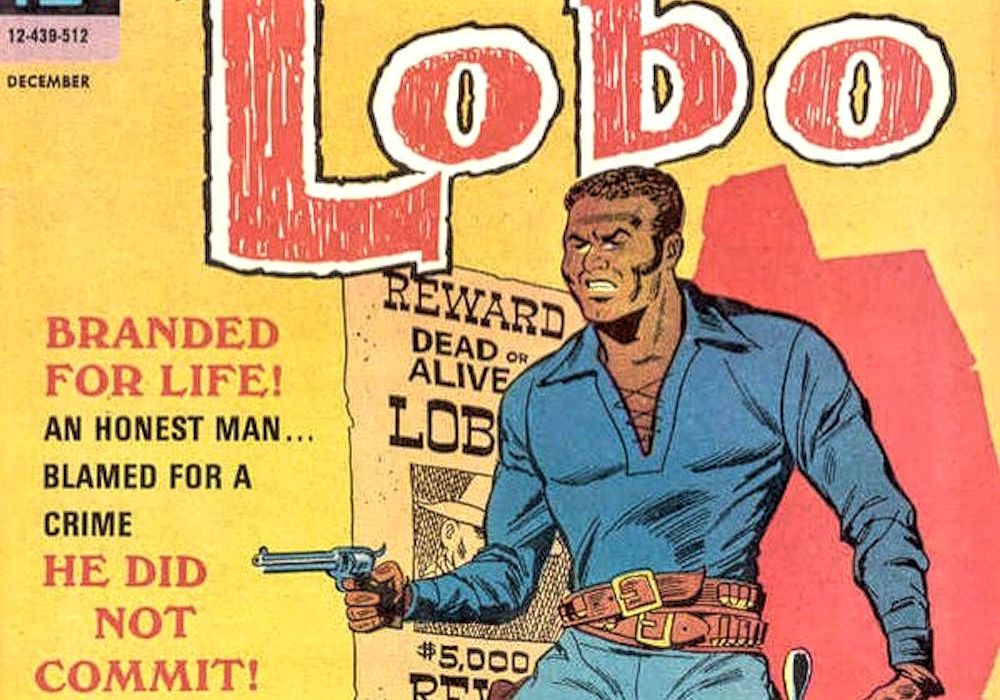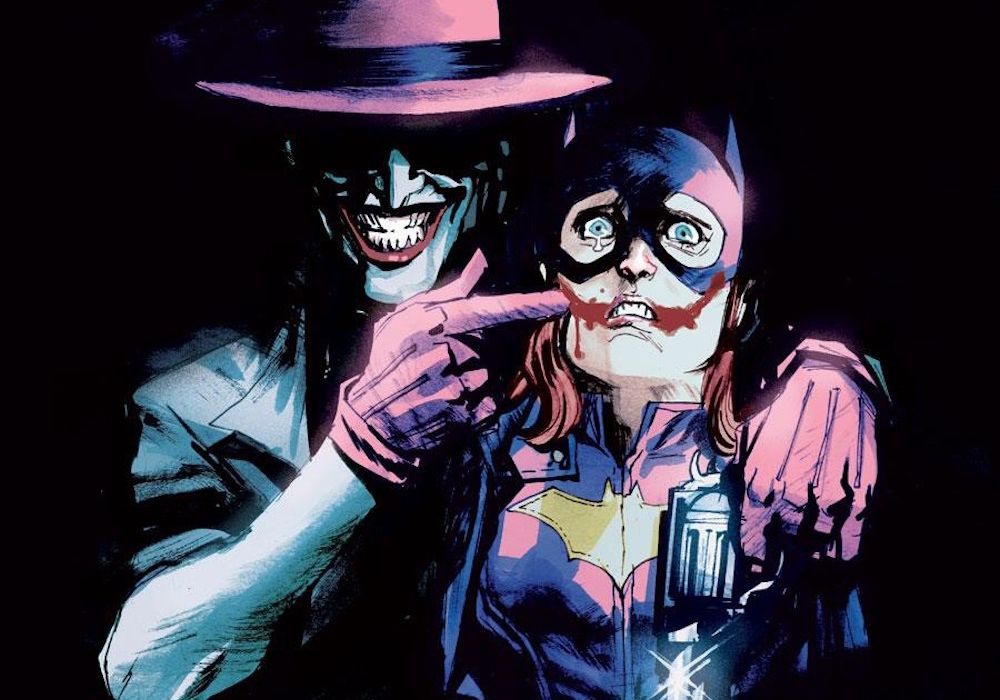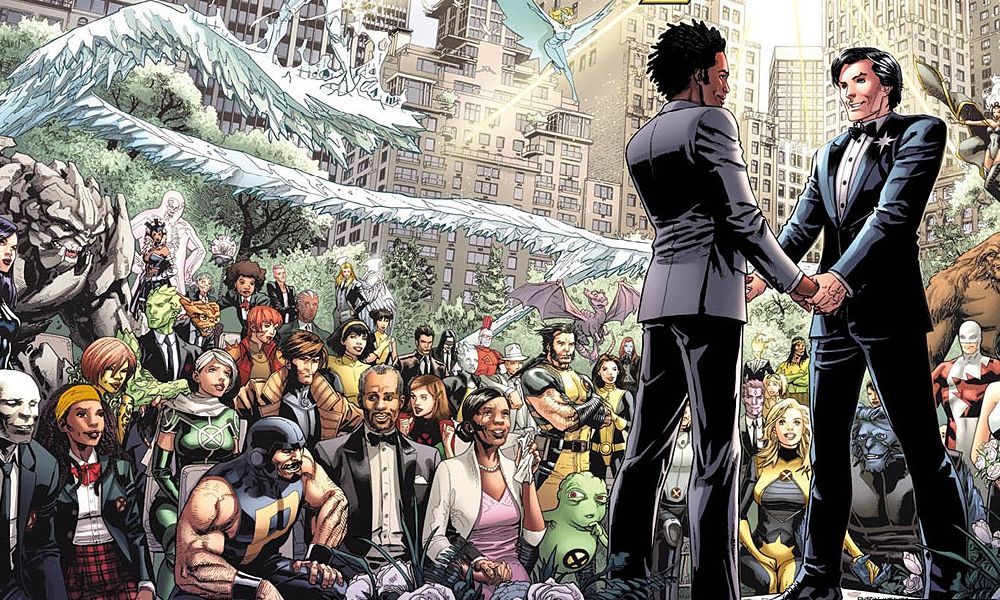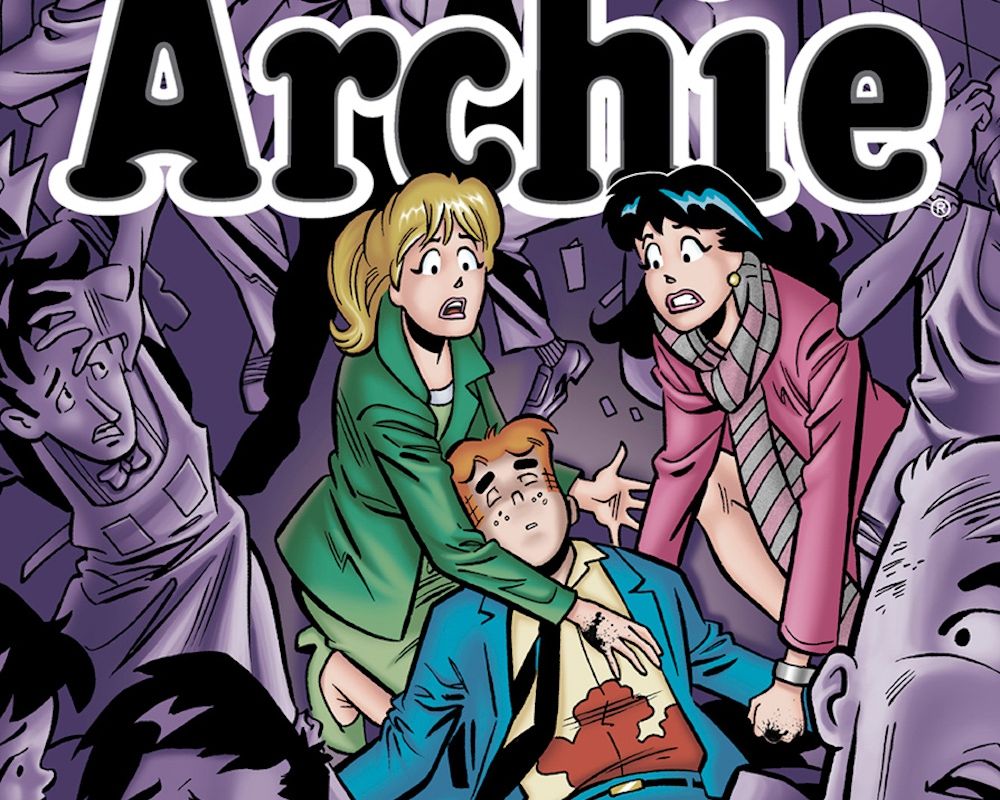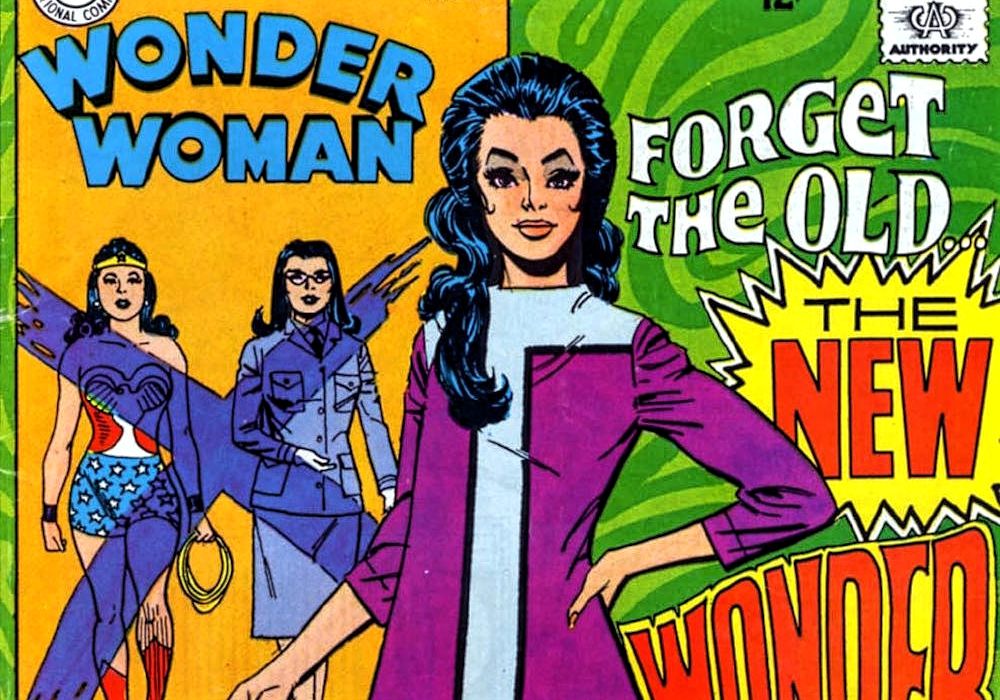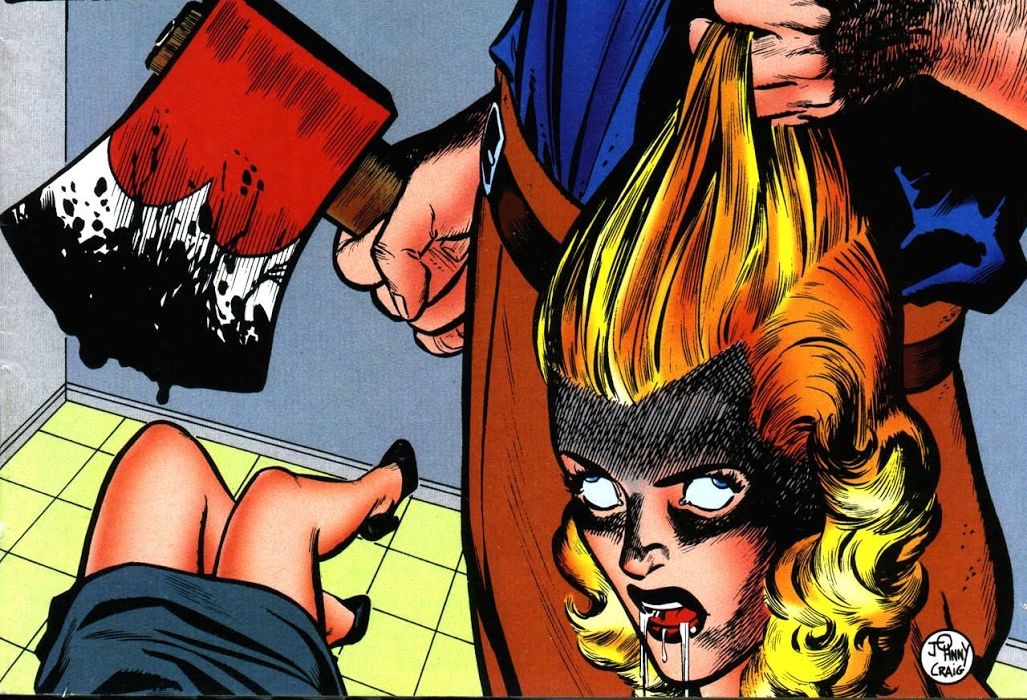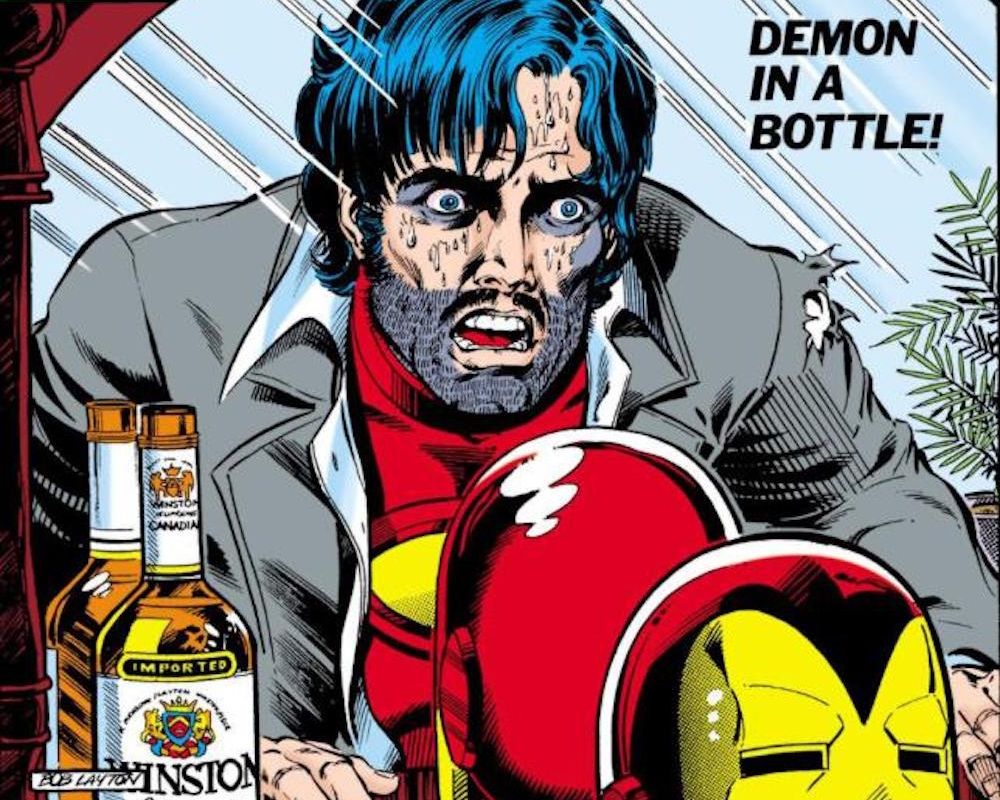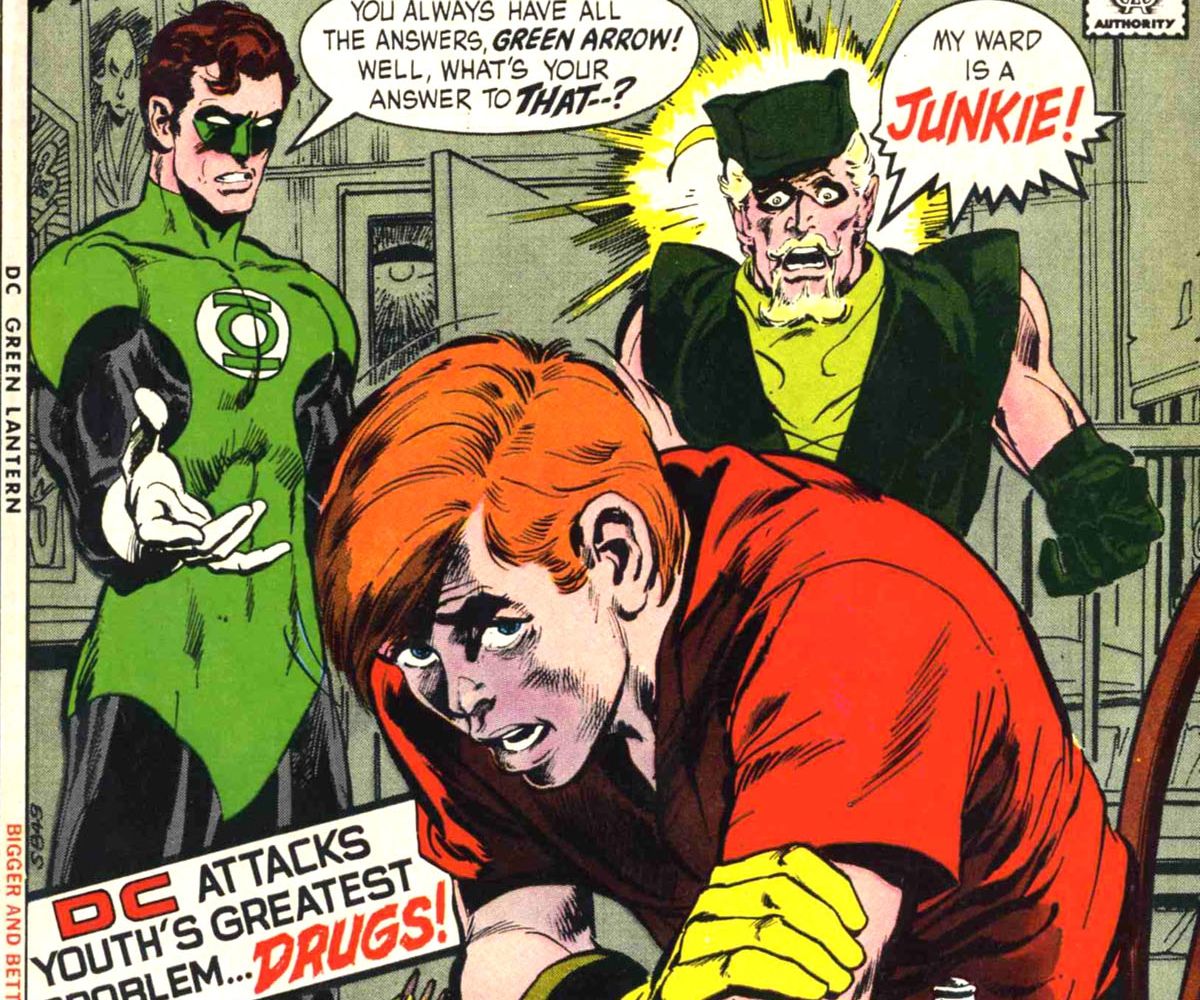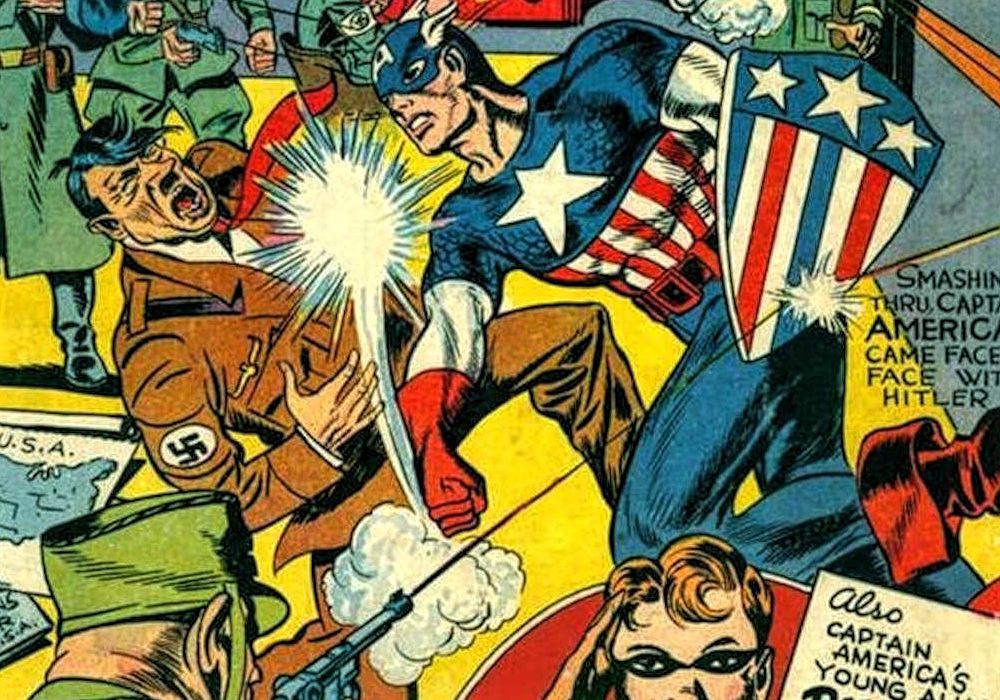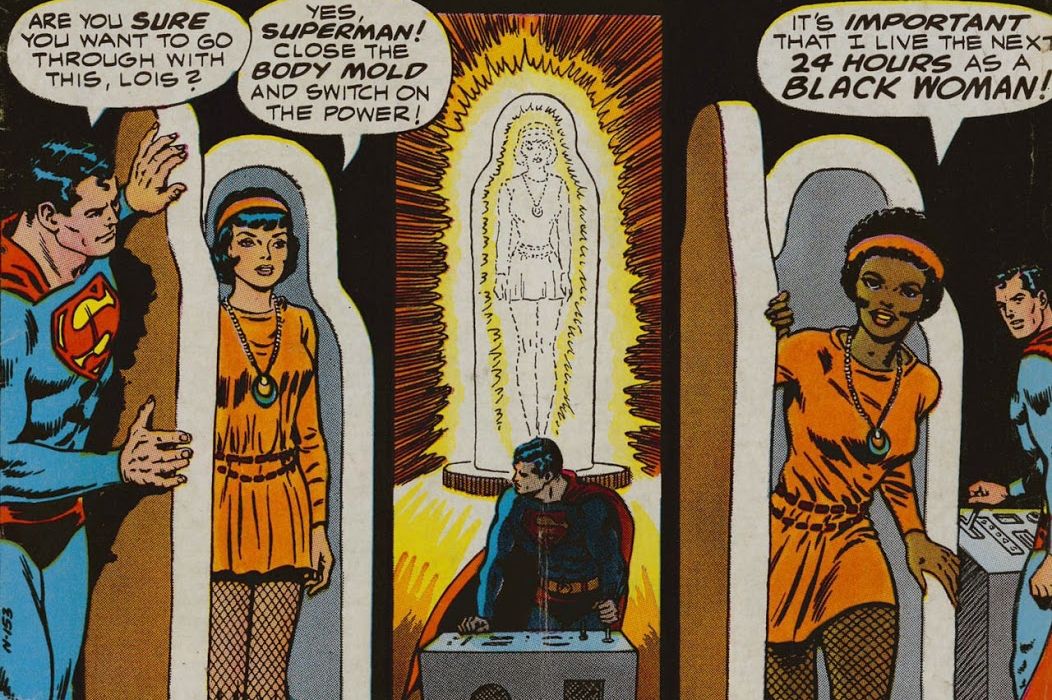Ever since their rise in popularity in the ’30s, comic books have become an important historical record, keeping track of our evolving attitudes, ideas, and behaviors. In many respects, they are a measure of our society at any given time. The combination of words and pictures tells a story unlike any other medium and it all begins with a cover: that first hint of what’s to come within those hallowed pages. Over the years, some of those covers have caused quite a commotion.
Let’s not forget about the importance of context, though. There are certain covers that left no impression at all when they were first published, but when viewed through a more modern lens, are deeply disturbing – seriously, check out the covers for World’s Finest #14 or Action Comics #457 and you’ll see what we mean.
However, this list will focus on the covers that were impactful from the moment they hit stands. Some were so contentious that they never even made it to print.
There are covers that were steeped in controversy at the time, only to wind up completely forgotten. Others left the industry forever changed. Not all of them have aged well.
Here are the 15 Most Controversial Comic Book Covers Of All Time.
15. X-Statix #15
Peter Milligan and Michael Allred took X-Force – later retitled X-Statix – in a bold new direction by killing off almost the entire team and replacing them with a group more akin to reality TV stars. From that point on, the comic established its entirely unique approach which satirized celebrity culture and deconstructed the superhero genre.
Fans of X-Statix understood that the book never took itself too seriously, so using a resurrected mutant version of Princess Diana as the comic’s newest superhero wasn’t out of the realm of possibility. In 2017, it may be difficult to understand the big deal here, but in 2003, just six years after her death, the decision didn’t go over very well. It didn’t help that the story was titled “Di Another Day”.
Sure, the intention was to make the princess a superhero, but Diana remained a much beloved and admired public figure, and many found the cover to be in poor taste. The resulting media pressure caused Marvel to pull the cover before the comic was published, using fictional pop star, Henrietta Hunter, as opposed to Princess Di.
14. The Divided States of Hysteria #4
The cover for this comic is not only too incendiary to be pictured here, but was found to be so offensive that it was pulled before the book was even released. It depicts a Pakistani man, castrated and hanged, with a racial slur on his chest. The cover was obviously attempting to make a statement, but no one seems to be sure of what kind.
According to the director of PR and Marketing at Image Comics, “ALL hate crimes are horrifying, dehumanizing, and distasteful, and the intent of this cover was to challenge people to look at what we as a society have become.” However, for many readers, the cover was exploitative, triggering, and insensitive.
Written and drawn by Howard Chaykin, The Divided States of Hysteria has proven controversial from its first issue. The cover featured a woman wearing an American flag burqa and a trans sex worker was brutally beaten within the comic’s panels.
Some fans feel that it comes down to censorship and the creator’s right to be provocative. Others think that Chaykin is too far removed from the people that he is ostensibly trying to represent and that these images are simply too hurtful.
13. Teen Titans #1
The comic book community is not without its issues. Some accept this fact and strive for change, while others… choose to lean into an awful stereotype. Perhaps the best recent example of the inherent sexism in the industry was the controversy centering on Teen Titans #1 (2014).
Kenneth Rocafort is a great artist, but his cover for that book wasn’t at all indicative of his talent. However, the issue wasn’t so much with the cover itself, but rather the ensuing conversation, which was anything but civil. CBR’s Janelle Asselin gave the cover a major dressing down for everything from the character designs to the team placement to Wonder Girl’s apparent breast implants – all valid points that she backed up with facts about the industry and their intended audience.
This led to a discussion so volatile that CBR chose to shut down their forums. Asselin received both rape and death threats, all because she was a woman who chose to question the way that a teenage girl was portrayed on a comic cover, which by the way, wasn’t even the point of the article.
12. Lobo #1
This name no doubt brings to mind DC’s interstellar bounty hunter. However, we’re referring to a character who debuted in 1965, in a comic published by a small company called Dell. This cover was incredibly important, as it was the first to feature an African American headlining his own series.
Up until that point, African Americans were largely portrayed as terrible stereotypes in comics. Lobo was undeniably a hero, a gunslinger bringing justice to the Wild West. Sadly, it would seem that the world was not yet ready to embrace this character and the comic was canceled after a mere two issues due to lack of sales.
Regardless of the fact that Lobo’s journey was cut short, this comic remains one of the most groundbreaking and important of all time. It signaled a changing of thetide, forging a path for all of the diverse comic book characters who would follow in Lobo’s footsteps.
11. Batgirl #41 Variant
The Killing Joke is considered by many to be the greatest Joker story ever written. However, for fans of Barbara Gordon it has gone down in history as Batgirl's worst. This is why Rafael Albuquerque’s variant cover for Batgirl #41 resulted in such an uproar. An undeniably talented artist, Albuquerque chose to draw on that most celebrated Joker story for his cover – one of 25 covers paying tribute to the Clown Prince of Crime in June 2015.
The problem is that generally these covers are commissioned and approved by people who aren’t working on the actual book, and oft times those in charge of them don’t know much about the comic itself. Albuquerque meant his cover as a creepy homage, but for many Batgirl fans, it was just a cruel reminder of Barbara’s terrible tragedy, which really didn’t match the direction of her New 52 reboot.
To Albuquerque’s credit, he asked DC to pull the cover after seeing the reaction that it elicited. DC complied and, while many vocal fans cried “censorship”, it was the artist and the team on Batgirl at the time who agreed that this cover simply did not line up with their vision.
10. Astonishing X-Men #51
For most longtime X-Men fans, the 2012 wedding between Jean-Paul Beaubier and Kyle Jinadu was less a shock than a forgone conclusion. Northstar was Marvel’s first openly gay character, having officially come out in 1992 – although his sexuality had been hinted at before then. He and Kyle had been in a loving, committed relationship since 2009 and as of 2011, the two could legally marry in New York.
Of course, this happy day was not without its detractors, most of whom were not comic book readers at all. In reflection of this anticipated controversy, one of Northstar’s own former teammates even rejected the union and refused to attend the wedding at all.
The cover expresses not only the love between these two characters, but also the support from their friends and family. This was a huge step in the right direction for Marvel and the reactions to the issue by readers were largely positive.
Of course, the wedding was in an X-book, so it didn’t exactly go according to plan, but just as the book’s creative team bravely faced off against their very real opposition, our heroes emerged triumphant.
9. Life with Archie #36
The journey of Archie Andrews can be traced back to 1941 and has spawned countless titles chronicling the adventures of this small-town teen. One of those books was Life with Archie, which told more dramatic stories than those of the main comic. The book ran from 1958-1991, but was relaunched in 2010. It was in the penultimate issue of this magazine-sized comic that Archie heroically took a bullet for his close pal. That shot was meant for the first openly gay character in Archie Comics, recently elected senator, Kevin Keller, who campaigned on gay rights and gun control.
This cover featured the striking visual of Archie bleeding to death between Betty and Veronica – even in death, the guy couldn’t choose! Although the character’s imminent demise was announced prior to the issue’s release, it was still quite a shock for fans to witness the death of the beloved Riverdale native. The writers intended the loss of Archie not only to be impactful, but also to drive home an important point about gun violence.
8. Wonder Woman #178
Wonder Woman was created to be a feminist icon, but decades of being written and drawn solely by men, who often misunderstood her, hasn’t always yielded the best results. Comics legends Dennis O’Neil and Mike Sekowsky had the best of intentions when they took over Wonder Woman in the late ‘60s. However, what was meant to update the character for the Women’s Lib generation was a pretty epic failure.
This cover was supposed to introduce an independent, empowered Wonder Woman. Although the big changes in this issue were primarily related to Diana’s wardrobe, the next issue would see her give up her powers, open a mod boutique, and become a martial arts expert. What began as mixed reactions eventually evolved into a mostly negative response, especially when people realized that this version of Wonder Woman was here to stay.
The change garnered the attention of Gloria Steinem, who argued that depowering Diana and stripping her of her costume was an anti-feminist interpretation of the character. O’Neil has since renounced this iteration of Diana and this cover remains one of the most controversial in the entire history of the Amazonian princess.
7. Crime SuspenStories #22
It doesn’t get much more controversial than a comic cover deemed so disturbing that it became the focal point of a trial that would affect the entire industry. Although this cover wouldn’t raise an eyebrow today, in 1954, it was scandalous.
That may have been the end of the story, but comics had a real life supervillain: Dr. Fredric Werthem. He literally wrote the book on how comics were to blame for juvenile delinquency, Seduction of the Innocent. This precipitated a decline in sales, which led to the formation of the Comics Code Authority and brought us the wackiness that was the Silver Age.
Artist Johnny Craig drew the cover, but it was E.C. Comics publisher, William Gaines, who was forced to testify in its defense. Gaines did his best to fight for the integrity of the art, but Werthem won out in the end.
Despite his continued battles with the CCA, Gaines was forced to cancel his company’s horror titles not too long after.
6. Iron Man #128
Although “Demon in a Bottle” is now considered by many to be the quintessential Iron Man story, when #128 hit stands in 1979, the cover shocked fans. Alcoholism was an issue that had not really been tackled in mainstream comics and the idea of a superhero succumbing to this particular villain was a revolutionary idea.
Struck by the unimaginable pressure Tony Stark must feel on a daily basis, cowriter David Michelinie wanted to explore how a normal human being might respond to that.
This cover was not only a striking image, but it was unlike any other that comic fans had seen. So memorable was this issue that “Demon in a Bottle” evolved into the name of the entire arc – the collection was originally titled “The Power of Iron Man”.
Bob Layton’s artwork drove home the point that superhero or not, Tony Stark was still only human.
5. Spider-Woman #1 Variant
The controversy surrounding Mila Manara’s Spider-Woman variant was strange, to say the least. Marvel somehow didn’t seem to realize that having a female superhero drawn by an artist best known for erotica might not appeal to their entire demographic. As for the fans, the cover really shouldn’t have surprised anyone familiar with Manara’s work.
This was 2014 and the company seemed to be making more of an effort to engage female readers than ever before. So, when Spider-Woman appeared on all fours with her butt up in the air, some readers felt that the image was many things, but empowering was not one of them.
There were fans and fellow creators who felt that it was unfair to criticize Manara for giving Marvel a Manara cover. The artist had been honing that style since the late ‘60s and he had made his name drawing erotica. Others felt that using the artist to render this cover for a female superhero book sent the wrong message to readers in general.
Marvel eventually responded to this outcry by canceling the remainder of Manara’s Spider-Woman variants.
4. Green Lantern/Green Arrow #85
This Neal Adams cover remains as powerful today as it was in 1971. The original draft was actually rejected by then editor, Julius Schwartz, because the Comics Code Authority would never approve it – drug use in any context was strictly prohibited. However, not long after the idea was pitched, Marvel published a game-changing Amazing Spider-Man story in which Harry Osborn grapples with drug addiction. This marked the first time that a mainstream comic was published without a stamp of approval from the CCA since their formation in 1954.
Both Adams and writer Dennis O’Neil were very passionate about this issue, having both had people in their lives who struggled with addiction, particularly to heroin. They chose Oliver Queen’s sidekick, Roy Harper, a well established “good guy”, in order to illustrate that the disease of addiction does not discriminate.
The success of “Snowbirds Don’t Fly” enabled Green Lantern/Green Arrow to become a much more socially conscious book, a trend that continued well after the end of O’Neil’s historic run.
3. Superman #75
Better known now as “The Death of Superman”, Superman #75 remains one of the most controversial comics of the ‘90s. There was a time when killing off Superman seemed like the craziest thing that DC could do, before comic book deaths essentially became meaningless – this is kind of the book to blame for that trend in the first place.
The thing about this issue is that it delivers on the promise of that shocking cover. Superman does die.
Okay, so we would later learn that he was just in a deep Kryptonian sleep, but for all intents and purposes, that story resulted in the death of the Man of Steel.
Although this would go down in history as nothing more than an incredibly successful gimmick, there is no denying the impact of Superman #75’s cover upon its release in 1992.
2. Captain America #1
Seriously, what is more controversial than Captain America making his debut by punching Adolf Hitler in the face, almost a year before the U.S. had even officially joined the war effort? Hitler was still a world leader at the time, so when Timely Comics – which would later become Marvel – pitted Hitler against Cap on the cover of Captain America #1, it was an unprecedented move, not to mention an incredibly bold one.
It’s easy to forget that in 1941 this cover was viewed very differently. Hitler had not yet gone down in the annals of history as one of the most monstrous men the world had ever seen. He was the leader of a country that the majority of the U.S. did not want to go to war with.
This is not to say that the US was Team Nazi. Most were just kind of hoping that Britain would triumph so that we could stay out of it – although we were already helping. Joe Simon and Jack Kirby used this cover to express their feelings about the war, not as propaganda, but rather, as their own form of political protest.
1. Superman’s Girlfriend, Lois Lane #106
Although this entire issue is problematic – not to mention the comic’s title in general – the cover was ridiculous from the moment it debuted in 1970. You can tell that DC was just brimming with good intentions here. Racial tensions were running high and they were no doubt attempting to write a relevant story reflecting that. However, their execution was rife with problems.
Let’s begin with the title, “I am Curious (Black)!” This was in reference to the sexually explicit Swedish companion films, I am Curious Yellow and I am Curious Blue and it’s right there on this crazy cover. See, we’re not off to a great start.
Lois Lane was all set to write her Pulitzer Prize winning story, but no one in Little Africa was willing to talk to her. So, naturally she did what any rational person would do and used Superman’s Plastimold machine to change her skin color in order to get the inside scoop.
Thus, both Lois and Superman wind up confronting their own unintentionally racist ideas in a story that was obviously well meaning, but still missed the mark.
---
What comic covers do you think are the most controversial? Let us know in the comments!

